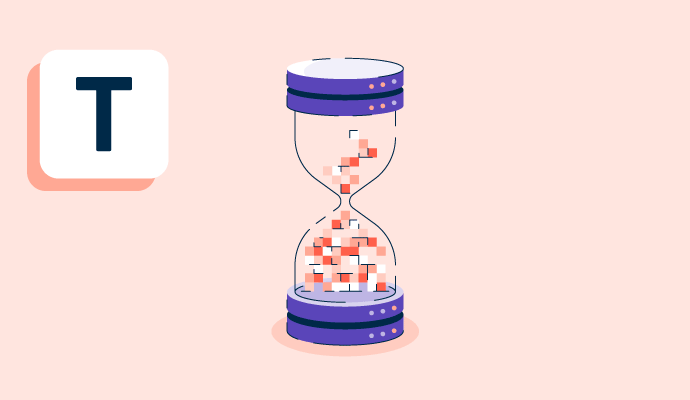What is a time series database?
Time series databases collect and manage time series values that vary over time. These databases organize themselves into structures recording values for a single product over time.
For example, consider a table created to track central processing unit (CPU) temperature. Each value would contain a timestamp and temperature for different periods. Time series data helps users track changes over a period, helping them determine an event's what, why, and when.
Many organizations use time series databases to monitor data in real time or if they run applications that consistently produce data.
Benefits of time series database
A time series database allows for storing data with timestamps. It helps users with accurate real-time data analysis due to its high scalability. Here are some of the expected benefits of a time series database:
- Efficient and consistent: This database consists of tools that store data at a very high speed. It also contains compression algorithms that store older data, which can be retrieved when required.
- Rapid data querying: As time series databases are time indexed, obtaining data for a particular period is easy. It helps analyze data such as financial and weather forecasts.
- Real-time streaming: Information is sent regularly, allowing streaming engines to perform real-time analytics and visualization. This database also performs data mining, allowing it to scale and store vast volumes of data as needed.
- Computing and processing: A time series database offers a lot of functions to perform extensive analysis. Some of the functions include grouping, aggregation, and comparison. These functions enable faster decision-making to optimize performance.
- Data lifecycle management: Having a regular feedback loop lets users adjust requirements and deliver exceptional results month after month. A time series provides accurate real-time reports. It uses metrics like percentile, maximum, minimum, and trends. This ensures an accurate summary over the period and helps the organization to proceed effectively without the fear of poor data management.
How does a time series database work?
Data is stored as a time-value pair in a time series database. It allows easy analysis and more straightforward querying. Time series databases are well suited for running multiple metrics parallelly. There are three aspects of a time series database.
- The database contains the essential CRUD (create, read, update, delete) features. In addition, it also includes features like availability, scalability, and dependability.
- The time series feature saves a timestamp, including the smallest time measurement. The date is stored using the datetime data type. Time series databases also offer support for obtaining statistics and groups of data based on time.
- Data doesn’t require relationships between entries from different tables, and hence older data can be archived.
Use cases of time series databases
Time series databases were initially used, keeping in mind the financial goals. But time series databases have expanded their use cases over time, with digitization and smart devices coming into the picture.
- Internet of Things (IoT): IoT devices such as smart appliances, mobile phones, and inventory management systems monitor activities and send data to create alerts. A time series database helps to identify patterns to monitor usage and establish targets.
- Forecast sales: The sales team can generate summaries and reports from the data collected over a period to forecast the performance and trends in the coming quarter or year. They can also suggest any improvements if needed through these reports.
- Financial trends: The time series database makes it easy to make financial forecasts. This is because they store a lot of contextual data that allows cross-referencing for analysis.
- Data reporting: The time series database offers characteristics that provide summaries for various periods, making it very effective. It helps to generate reports very accurately, even for the tiniest time measurement, like milliseconds.
Time series database vs. relational database
A time series database is a group of data queried and indexed based on a specific time.
Time series data is used in everything ranging from advanced analytics to augmented reality models. While a time series database is built for real-time data, relational databases are built to highlight the relationships.
Relational databases provide storage and access to data points that are connected. Data in relational databases is stored in tabular form with rows and columns. It’s based on a relational model that is easy to understand.
Each row in the relational database is a record with a unique ID known as a key, and the column holds the attributes of the data. Each record consists of a unique attribute. They’re a traditional approach to data storage and management.
Time series databases can handle massive data that are time tagged. They store data in a de-normalized format. This means data is optimized only for read requests rather than write. Relational databases, however, have a high write latency, making them unsuitable for real-time analytics. Time series databases are highly scalable, whereas relational databases’ scalability depends on their architecture and design.
Learn more about relational databases to find out why they’re so popular.

Sagar Joshi
Sagar Joshi is a former content marketing specialist at G2 in India. He is an engineer with a keen interest in data analytics and cybersecurity. He writes about topics related to them. You can find him reading books, learning a new language, or playing pool in his free time.













